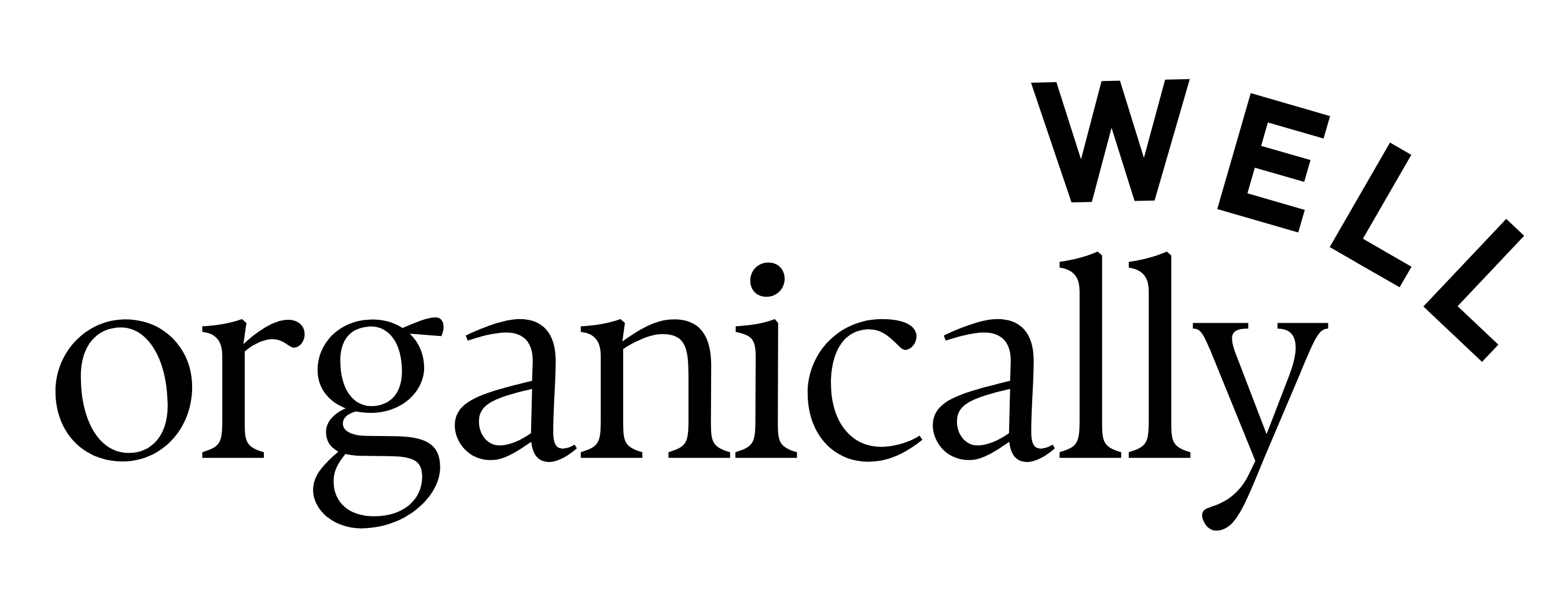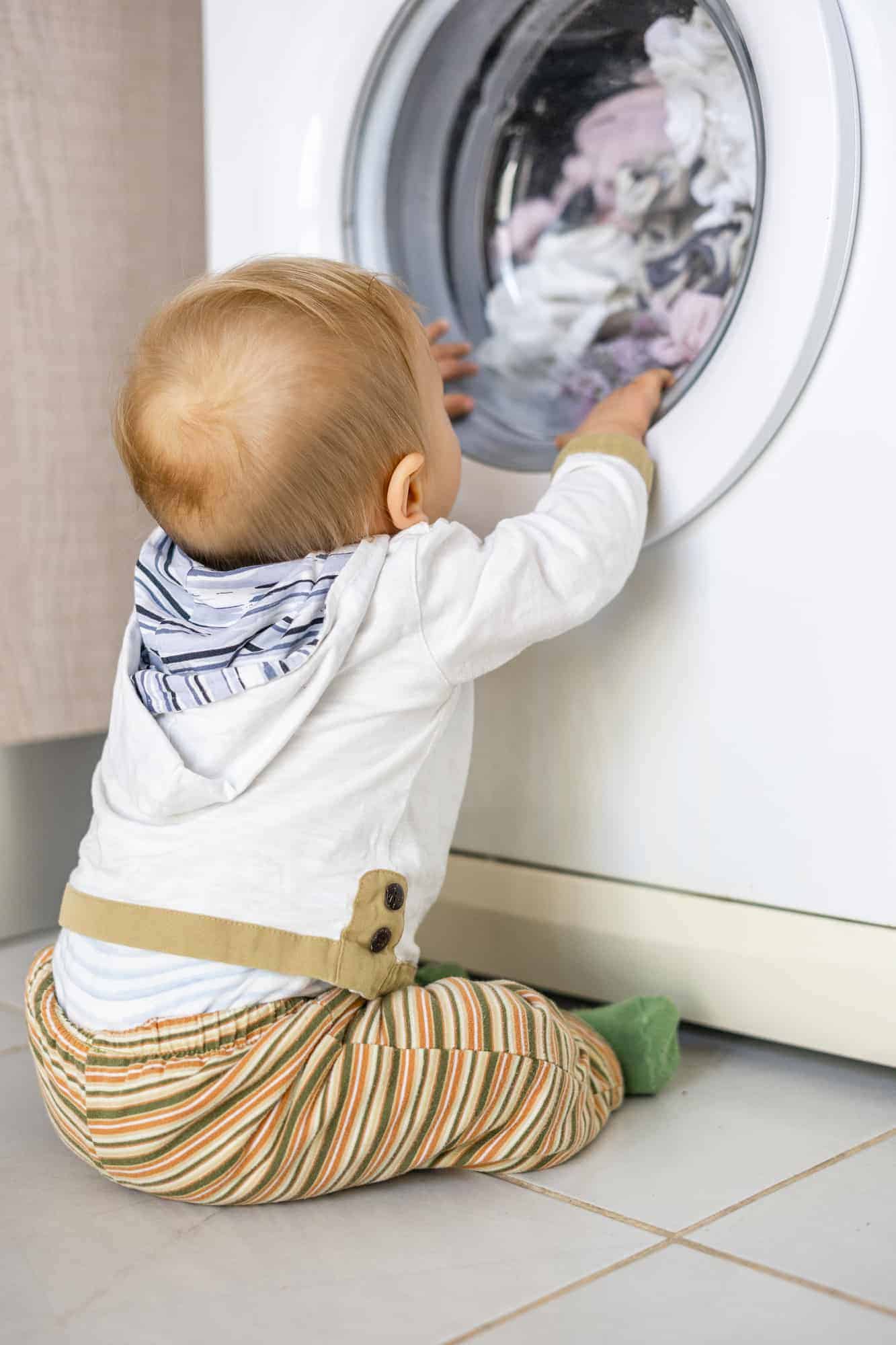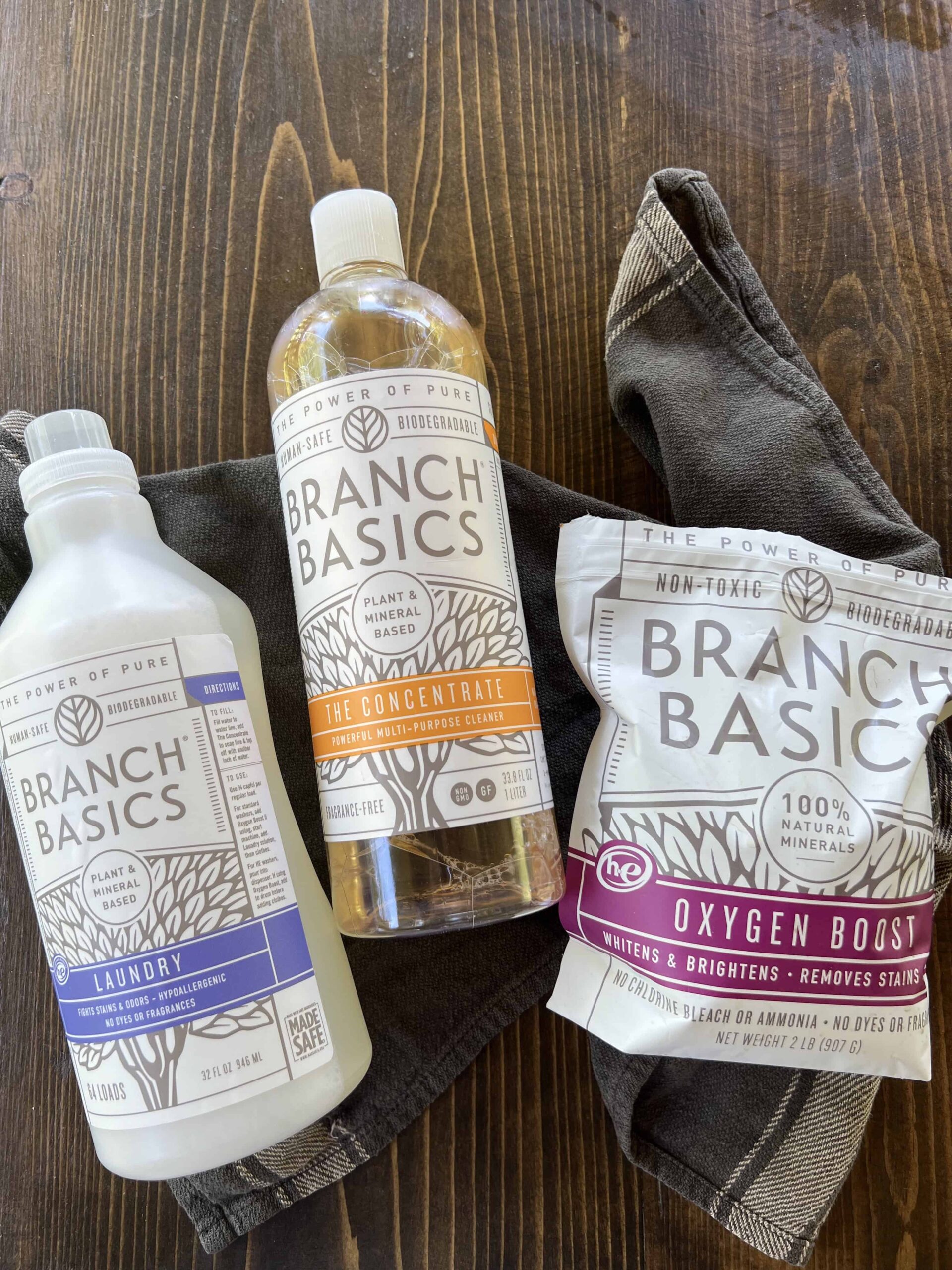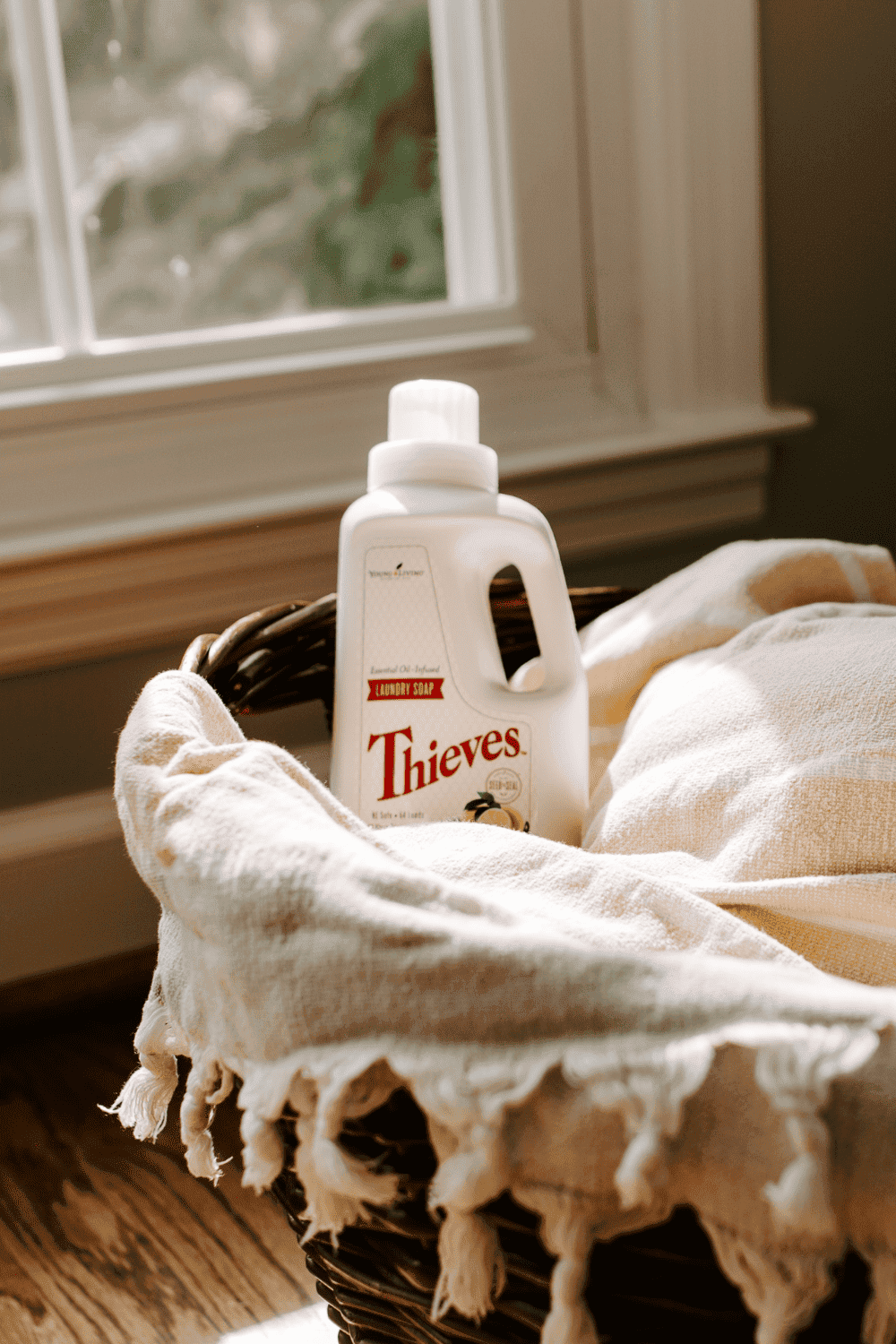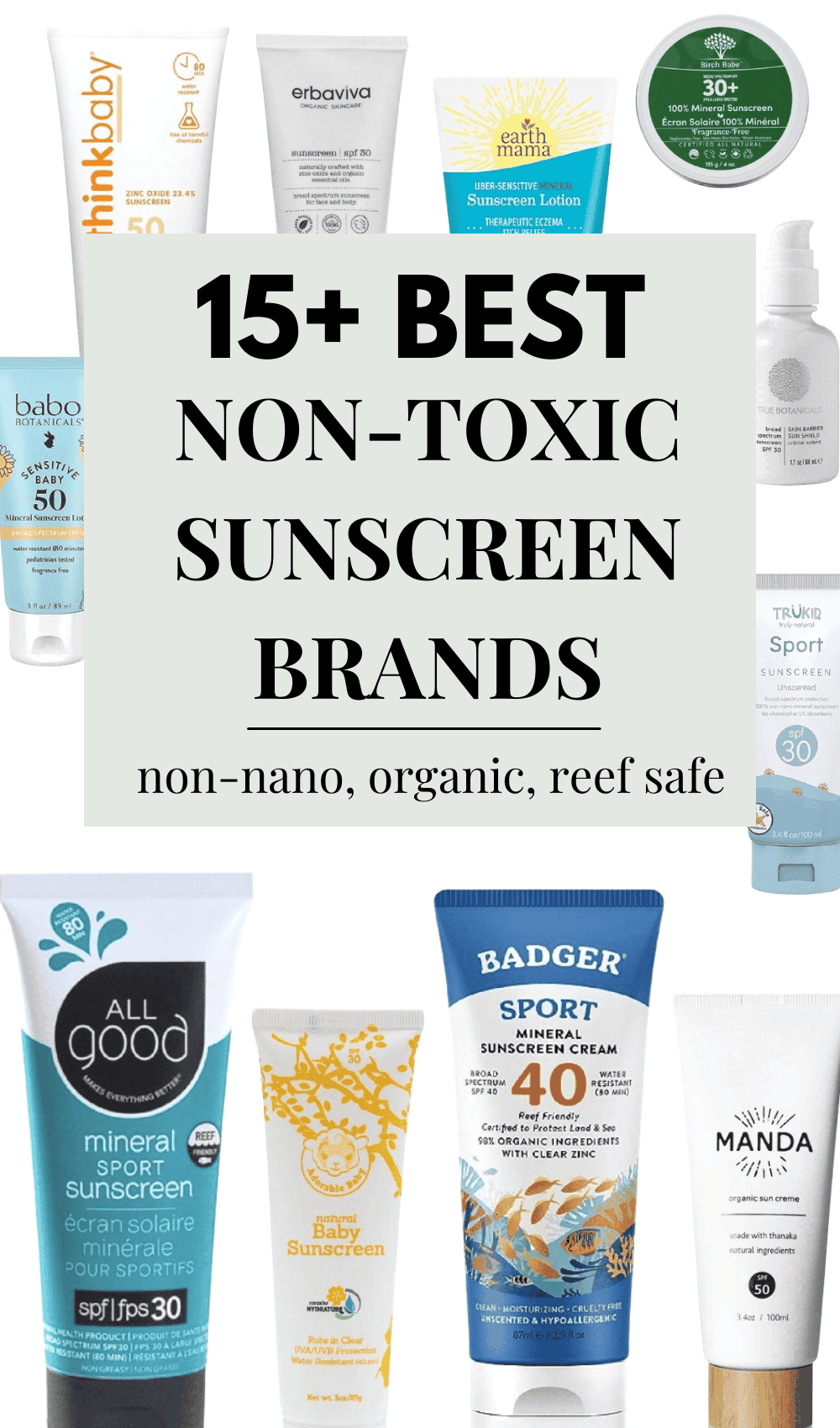Toxic Ingredients To Avoid In Laundry Detergent
Laundry detergents that line the shelves today are usually a super-mix of hundreds (if not thousands) of chemicals, with the majority being a risk to your health.
It truly boggles my mind that these products are even legally allowed to be sold to the public!
Here’s a short list of common toxic ingredients to avoid in laundry detergent.
What Makes laundry detergent potentially toxic?
When it comes to laundry detergent, it turns out there’s a lot more at stake than just clean clothes. Many traditional detergents are packed with harmful chemicals like phosphates, optical brighteners, and formaldehyde, not to mention synthetic fragrances that can be quite toxic.
These ingredients don’t just pose a risk to your health, potentially acting as carcinogens or endocrine disruptors, but they’re also harmful to the environment.
9 Ingredients to avoid in laundry detergent
For those of you keen on minimizing toxin exposure and promoting a safe home environment, knowing which harmful ingredients to dodge in laundry detergents is crucial.
From carcinogens like formaldehyde to endocrine disruptors and volatile organic compounds (VOCs), this guide lists common harmful ingredients in commercial laundry detergents. Learn about why they are used, how to identify them and how to create a safe, non-toxic laundry routine.
1. Synthetic Fragrance
This covers a wide variety of terms that companies might use on the ingredient labels. Most commonly, I see ‘natural fragrance’ or something along those lines. Any synthetic ingredients that add a fragrance or scent to the product are toxic.
Fragrances in laundry detergents are commonly a mixture of up to 3000 chemicals, with many being petroleum derivatives. At room temperature, these chemicals vaporize into volatile organic compounds (VOCs), which you end up ‘smelling’ and, unfortunately, breathing into your body. (source)
Synthetic fragrance is a largely unregulated ingredient. In the U.S, companies are not required to list all of the ingredients used to make the fragrance in their product. It all just gets labelled under the umbrella term “fragrance or scent.”
Exposure to these fragrances may cause skin irritation and conditions, allergies, breathing problems, asthma attacks, headaches, nausea, cardiovascular and neurological problems, and has even been associated with cancers and reproductive toxicity (source 1, source 2).
You definitely don’t want to breathe or wear these toxic volatile organic compounds (VOCs) all day as they off-gas!
2. Chlorine
Also known as bleach, companies use it in laundry detergent as a disinfectant and whitening agent for those ‘bright-white’ promises.
Chlorine is a toxic chemical that off-gasses VOCs that may cause irritation and burns to the skin and eyes, respiratory distress and even lung damage. (source)
3. Optical Brighteners
Optical brighteners, also called Fluorescent Whitening Agents (FWAs), are fluorescent materials that absorb ultraviolet (UV) light and emit blue-violet light. When clothing is washed with these agents, they appear brighter and whiter. (source).
These chemicals aim to make whites brighter by reflecting blue light, giving the illusion of a cleaner wash.
When these brighteners dissolve in water, they accumulate in the clothing fibres. They are designed to stay on clothes, making them incredibly resistant. In other words, you cannot rinse them off.
However, this effect comes at a cost. These brighteners are known to cause skin irritation and sensitivity and are being investigated for potential concerns of estrogen disruption and reproductive toxicity concerns. (source)
I don’t know about you, but discovering that optical brighteners stay on our clothes post-wash was a real eye-opener for me. Washing your clothes should leave your clothes fresh and clean and not full of harmful chemicals!
READ: How to Transition to Non-Toxic Laundry Detergent
4. Formaldehyde
It is also commonly found as Methanal on laundry detergent labels. Formaldehyde is one of the most toxic ingredients that you can find in laundry detergent.
At room temperature, Formaldehyde vaporizes into a toxic gas (VOC).
It’s listed as a ‘complete carcinogen’. Even low-level exposure to formaldehyde may have adverse health effects ranging from irritation to the nose, eyes, and throat to headaches, nausea, breathing difficulty, wheezing, asthma attacks, and other respiratory problems. Formaldehyde is directly associated with cancers. (source)
5. Dioxane (1, 4, Diethylene Dioxide, Diethylene Ether, Dioxan)
Described as one of the worst additives in laundry detergent. It is a carcinogen. Exposure to dioxane can cause eye and nose irritation, liver, lung and kidney damage, and cancer. (source)
6. Polyethylene Glycol (PEGs)
These compounds are produced through a process called ethoxylation. The issue is that contamination with ethylene oxide can occur during this process (ethylene oxide is associated with multiple cancers). (source)
7. Ammonium Sulfate & Ammonium Quarternary Sanitizers
These harsh cleansing and disinfecting agents are formaldehyde-releasing toxic chemicals associated with many health risks. They make clothing feel soft after washing and are commonly present in laundry products, especially fabric softeners.
These sanitizers pose risks of allergies and skin, eye, and lung irritation, contact dermatitis, asthma, eye and mucous membrane injuries, and reproductive and developmental toxicity. There are also concerns that these toxic agents promote ‘superbugs’ – meaning the development and spread of resistant bacteria. (source)
8. Phosphates
These chemicals, while great at softening hard water and boosting cleaning power, end up being washed away into our rivers and lakes.
What does this mean for the environment? A big mess. Phosphates promote excessive algae growth, which sucks up oxygen from the water, leaving little for fish and other marine life. The result? A dangerous imbalance that can lead to dead zones in our precious aquatic ecosystems. It’s a serious concern for anyone who cares about preserving the beauty and health of our planet.
9. SLS & SLES
Sodium Lauryl Sulfate (SLS) and Sodium Laureth Sulfate (SLES) are both surfactants commonly used in commercial laundry detergents. In laundry detergents, surfactants work by by reducing the surface tension between water and stains, emulsifying dirt and oil, and facilitating their removal from fabrics during the washing process. They also create that sudsing and foaming quality of detergents.
However, it’s important to note that while these surfactants are effective, they can also be harsh on the skin and may cause irritation to skin, eyes and the respiratory tract. It has also been noted to accumulate in organs which has the potential for long-term health issues.
Find out more about the harmful effects of SLS and SLES in household products.
Note: These surfactants can also be labelled as sodium laurilsulfate and sodium dodecyl sulfate.
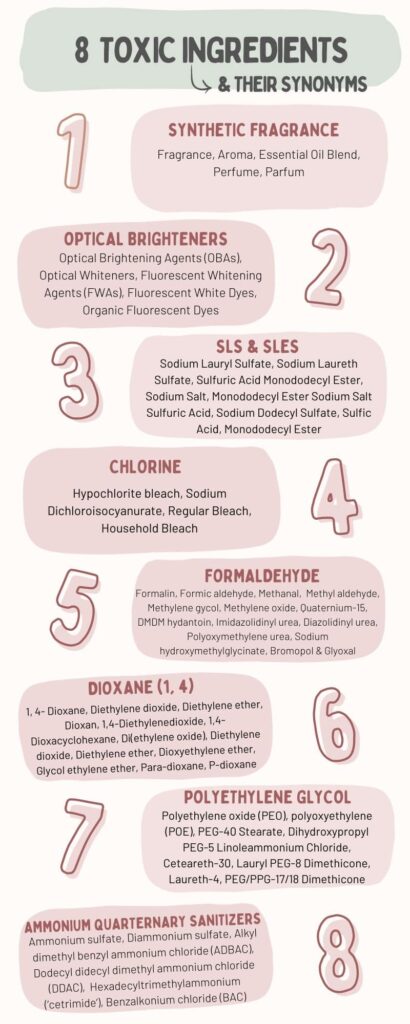
How To Identify Toxic Ingredients on Labels
Trying to read a laundry detergent ingredient list can feel like a prank. You’ll find yourself reading a huge paragraph of long, undecipherable words.
What even are those ingredients?
Now that you know nine of the most common ingredients to avoid in laundry detergent, that’s a start. If you spot one of those ingredients on a laundry detergent, you know to move on.
Your next step is to look for certifications.
Certifications To Know
When you’re hunting for nontoxic laundry detergent alternatives, it’s like deciphering an ancient script.
However, certifications like the EWG-rated symbol, or the Made Safe label are awesome indicators that you’re heading in the right direction. These certifications are awarded to products that are made with safe, toxin-free ingredients.
They represent products that have passed rigorous testing for harmful chemicals, ensuring that your laundry routine is as human and environmentally safe.
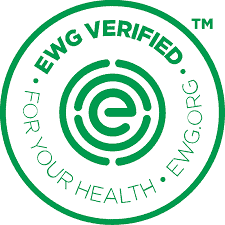
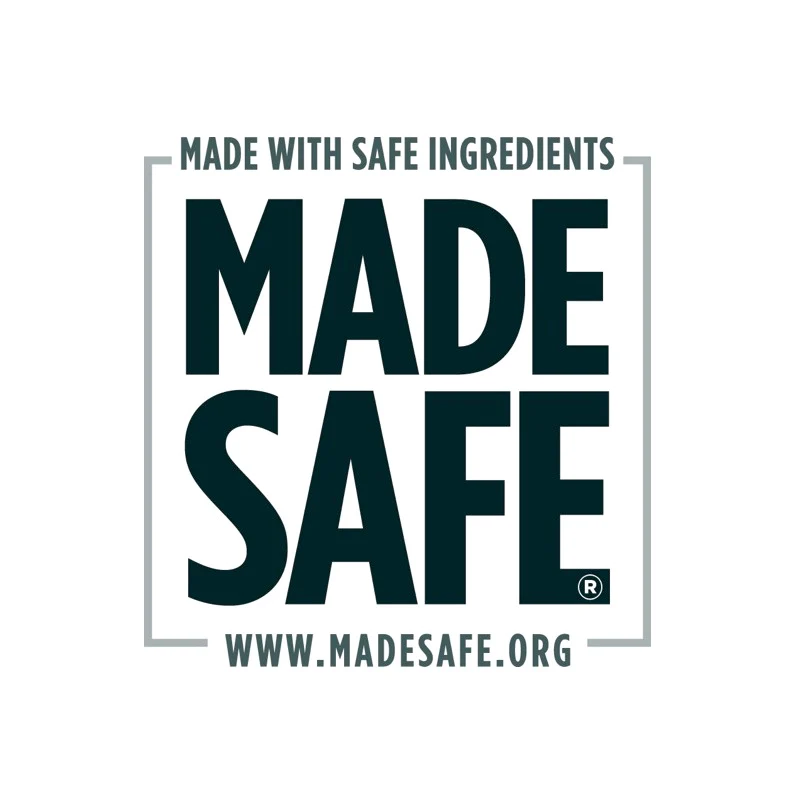
The EWG Search Tool allows you to search up any household product brands and shows you a health and safety rating as well as ingredients and their concerns. It’s a really easy way to make sure the laundry detergent you’re using is truly safe and toxin-free.
Made Safe Certified Products list also has a wide variety of verified safe, non-toxic brands. If you need help finding a trusty product you can pick from their categories and see which brands are Made Safe!
You May Also Like:
- 5 Best Non-Toxic Laundry Detergent Brands (Compared & Reviewed)
- How To Get Fragrance Out Of Clothes
- How To Detox Your Home Room-By-Room
Non-Toxic Alternatives
Thankfully, switching to non-toxic laundry alternatives is getting easier. Many brands are coming out with 100% toxin-free, human-safe laundry products that clean just as well as commercial brands without the attached risk to your health.
If you’re searching for good, non-toxic laundry detergent brands that actually work, I reviewed five of the most popular brands and ranked them. So, go read that post and save your money by buying a natural laundry detergent that truly cleans!
Non-Toxic Dryer Sheet Alternative
I’m really sorry to burst your bubble again, but dryer sheets? Yeah, they’re full of harmful chemicals and synthetic fragrances, too.
BUT, wait! You can still have clothes that smell lovely out of the dryer and reduce static cling – in a natural, non-toxic way.
And you can do this with wool dryer balls! Basically, they are 100% natural wool balls that you throw into the dryer along with your clothing. You can add a couple of drops of essential oils to add a nice, natural aroma. They add a natural scent to your clothes and reduce static cling (without toxic ingredients!).
Plus, they cost less than $20 and will last you years. They’re reusable, unlike dryer sheets!
Grab 100% natural wool dryer balls here.
Natural Fabric Softener Alternative
You probably guessed it at this point, but popular fabric softeners are one of the worst laundry products.
An easy natural fabric softener alternative is white vinegar. Simply add 1/4 – 1/2 cup of white vinegar to the rinse cycle of your washing machine to soften clothes, reduce static, and remove detergent residue. It also helps to neutralize odours and remove synthetic fragrances from your clothing.
DIY Laundry Detergent Options
Aside from buying a non-toxic laundry detergent, there are other natural options, like making your own homemade laundry detergent!
There are many effective recipes online that are made with natural ingredients and are generally quite inexpensive to make. So, if you’re crafty and like to DIY, I encourage you to try making natural laundry detergent yourself!
I’m still testing out different formulas because I haven’t found one I love just yet, so if you find a great recipe or have your own, leave it in the comments!!
Tips For a non-toxic laundry routine
Some tips to help you create a natural laundry routine:
- Use non-toxic laundry detergent
- Make homemade laundry detergent
- Use wool dryer balls instead of dryer sheets
- Use vinegar instead of fabric softener
- Use baking soda or oxygen boost (not oxi clean!) to treat stains and deodorize
- Air dry your laundry outside in the sun
You May Also Like:
- 5 Best Non-Toxic Laundry Detergent Brands (Compared & Reviewed)
- How To Get Fragrance Out Of Clothes
- How To Detox Your Home Room-By-Room
What’s your favourite non-toxic laundry detergent brand?
